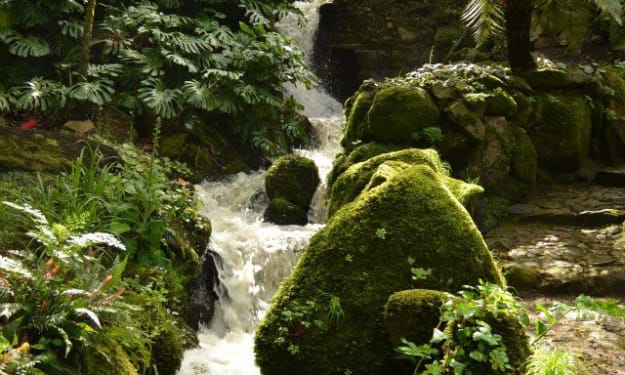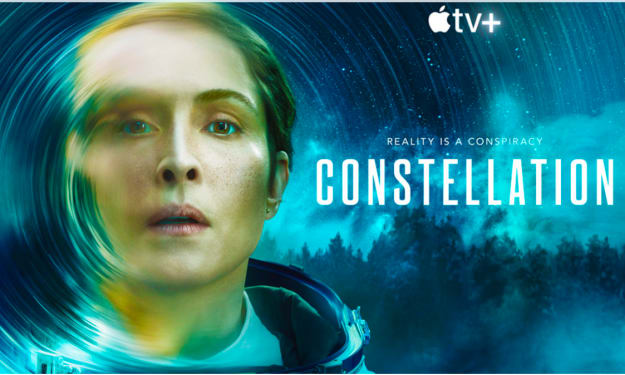
We abuse land because we regard it as a commodity belonging to us. When we see the land as a community to which we belong, we may begin to use it with love and respect. – Aldo Leopold, A Sand County Almanac
It is what people do with whatever ideologies they adhere to that, in the end, defines the impact said ideologies have on the world around them, and the human psyche. The historian, Carolyn Merchant, explains much of the effects of the evolution of the dominionist ideology. In regards to the relations and differences between humans and animals, an ideology promoted particularly during the medieval, post-pagan era, she says that “to [Christian] theologians such as Aquinas, animal souls were characterized by sexual lust and ceaseless wandering… The danger for human souls was that they might sink into a state of wildness beyond the possibility of redemption… Sexual lust was a mark of the failure of the higher mental powers to control and subdue the bodily passions” (Merchant, 40). This association of animals, who in many ways represent nature in this sense, with inherent sexuality, much like the case of Pan, in conjunction with the Christian condemnation of human sexuality, further institutes the separation between mankind and the natural world. She expresses this in contrast to the Greeks and Romans, for whom “the demarcations between people and animals had been less rigid… The ancients populated their world with half-human animals, all manifestations of a universal matter. Fauns, satyrs, nymphs, and sileni were blatantly sexual beings that inhabited woodland pools and meadows” (Merchant, 39).
For pre-Christian pagans, even those who managed to retain their pagan identity in the Christian and post-Christian eras, life was a matter of balances and wholeness. Nothing can exist individually. There is no light without darkness. There is no day without nighttime. There is no male without female. It is only in the unity, that there can be any sense of spiritual purity or completion. (This is one of the Mysteries) Everything is a part of the whole. There is no real hierarchy within animism or pantheism, as there inevitably is within polytheism and monotheism. In this same manner, there is little if any hierarchy between different species of animal, other than the cyclical nature of hunter and prey. Everything is interconnected through this cycle of life and death, sustained and sustainer.
As Merchant described it, the Indians of North America, particularly New England, had a similar relationship to the natural world around them. In many ways, it was even more intrinsic. For these Indians, “no nature-culture demarcation separated the animal from the human world… Assumptions of human descent from animals and their common generation from the earth mother indicate a fusion rather than a contradiction between the two worlds” (Merchant, 44). This animistic connection permeated every aspect of their worldview. Their “world was one of symbiotic participatory consciousness” (Merchant, 46). In this sense, they were one with nature and the animals. A participatory interaction with one’s world requires that person to be completely present. It requires the constant use of every sense, not just sight, which can easily be abstracted, but also hearing, taste, smell, and touch. This “participatory consciousness” permeated every aspect of their lives, everything from hunting practices to their identities (Merchant, 47-48).
Merchant’s treatment of the New England Indians deals primarily with the Eastern Abenaki, who resided in what is present-day Maine. Their hunting practices portrayed almost perfectly how completely interconnected and intermeshed their existence was with the animal world. In preparation for a hunt, they used “dreams, divinations, behavioral taboos, and spiritual preparations… [to prepare] themselves to be, think, and behave like the animals they hunted” (Merchant, 47). Their “hunting depended on mimicry” (Merchant, 47). The “animals were lured by mimicking their erotic habits,” such as mating calls (Merchant, 48). The animistic world of the New England Indians was rich in symbolism and interconnectivity. There was no distinction between human, animal, and nature, necessitated by a disconnected ideology of separation. On the contrary, “the natural and spiritual were not distinct nor were people denigrated by association with the wild” (Merchant, 50). They lived in a world imbued with participatory consciousness, which stands “in contrast to the transcendent world of Judeo-Christian religion dominated by the visual sense (illumination, light, seeing) and the mathematical, analytical world of modern science dominated by the disembodied intellect (mind’s eye), participation precludes separation” (Merchant, 47-48). Their world was one of wholeness and completeness.
The worldview of the Indians was not compatible with that of the Puritan, New England colonists. Their integration of human and animal attributes, particularly in their recognition and use of animal sexuality in their hunting practices, which ironically is a practice still used by modern hunters, served as an effective wedge between the different communities. Their kinship with nature and their acknowledgment of, and identification with, the more sexual aspects of their animal kin created, in the eyes of the colonists, a wildness that earlier, medieval, Christian theologians had warned of. Eventually,
“The mimetic consciousness of Native Americans based on the epistemological equality of all senses gave way to the domination of the visual as the transcendent God of the Europeans replaced the Indians’ animism. The erotic relations between Indians and animals and the lack of sharp distinctions between them reinforced the colonists’ own separation between the human and animal worlds”
(Merchant, 68).
This ideology of separation, embraced by the new masters of the American landscape, sowed the seeds, so to speak, for the greater dominion ethos of the industrialized world, which is apparent in the days of Thoreau.
As has been alluded to, Thoreau did not mesh well with the ideology and society from whence he came. He was not a separatist of nature, he was a lover thereof. In his eyes, the earth was alive. She was a teacher, mother, and lover (Merchant, 255-256). His connection to her was innate to the very depths of his soul. He was seemingly out of step with industrialized society, because his true ideological counterparts, other than a very few, were both before and after his time. “New England romantics such as [Thoreau and Emerson] described nature in deeply personal terms… they not only looked deep into wild nature for an intimate experience, but back to the period when nature had been elevated as a mother, nurse, and teacher” (Merchant, 254). In his immense love affair with the natural world, Thoreau was also a preservationist.
Thoreau called for an element of a sense of restoration. This restoration, mixed with not separated from man’s dominionistic ideology, was an ideological proponent of the earlier conservation movements, such as the national parks. The sites of the national parks were chosen for specific outstanding characteristics, “such features greatly enhanced the potential of the parks as pleasuring grounds that would attract an increasingly mobile American public interested in the outdoors” (Sellars, 14). These places, their land, and surroundings were chosen because of their novelties. The land and scenery became ‘hot commodities’ (Merchant, 172), because of their tourist ideal and potential. The National Parks Service followed a mandate that “forbade ‘wanton destruction of the fish and game’ within the park, and provided for the ‘preservation, from injury or spoliation, of all timber, mineral deposits, natural curiosities, or wonders within said park, and their retention in their natural condition’” (Sellars, 14). This preservation was not a pure sense of preservation. The term ‘natural condition’ was redefined through management, for the sake of tourism (Sellars, 22-23). Aspects of the parks were developed to entice tourists even more. It was a “paradoxical theme,” particularly in that the “development for public use and enjoyment could foster nature preservation” (Sellars, 16). These aspects of development and preservation were entirely codependent and interrelated. Without the development, tourism most likely would have remained minimal, and without tourism, there would have been less of a cry for preservation. In this sense, the commodification of nature as a leisure opportunity is what saved her from further exploitation and degradable development. It was through this development of that land that further development and stripping of the natural resources did not occur.
In the twentieth century, the rise of suburbanization and the mass production methods utilized therein provide a clear example/ideological descendant of the dominant dominion ideology, as well as the commodification of nature. In his book The Bulldozer in the Countryside, Adam Rome explains that “in the years after World War II, the nation’s biggest homebuilders were hailed as heroes: By making the United States a nation of homeowners, the boosters argued, tract housing would help lay the foundation for a booming mass-consumption economy” (Rome, 3). Some of the key terms here are “homeowners” and “mass-consumption.” The ideology of the twentieth century was far removed from that of colonial, Puritan, New England, but they certainly contained common elements. The common element is the connection to the ideology of separation, and the sense of commodification that is made possible by such separation. If you are a part of something, you cannot be above it; you cannot be lord over it. It is only through an abstraction of something that ownership is possible.
In order for mass-consumption to be possible, mass-production is necessary. The methods of mass-production in the housing industry had intense effects on the natural world around it. Rome explains that “for the first time, builders put hundreds of thousands of homes in environmentally sensitive areas, including wetlands, steep hillsides, and floodplains. Builders also began to use new earth-moving equipment to level hills, fill creeks, and clear vegetation from vast tracts of land” (Rome, 3). The result had lasting effects on the natural environment, including flooding, soil erosion, and the displacement of wildlife populations (Rome, 3). Regardless of the more negative effects, which did not gain much publicity for quite some time, a newly expanded ideology of what it meant to be an American gained prominence. In this “the single-family home [became] one of the defining symbols of ‘the American way of life.’ The issue of homeownership was also tied to ideas about democracy, freedom, and civic order” (Rome, 7), which were deeply rooted in the American psyche of the twentieth. It took the majority of the twentieth century for the impact of suburbanization on the environment to become a “prominent subject of debate” (Rome, 219).
In the early 1970s, land use regulations were instituted by primarily the state governments in an effort to, at the very least, minimize the greater effect of environmental destruction. These regulations, however, were contested by landowners as being unconstitutional. In this regard, Rome quotes “the English legal scholar William Blackstone,” who stated “so great… is the regard of the law for private property… that it will not authorize the least violation of it; no, not even for the general good of the whole community” (Rome, 230). This primacy of the ideology of ownership, which is possible de facto only through abstraction of relationship and separation, defined and still defines the interaction of the majority of individual landowners with the land they ‘own.’ This ideology of ownership is one in which the owner has ultimate authority over that which he/she owns. This authority of ownership is only possible through the commodification of nature, which is in turn only possible through its abstraction.
Ownership, authority, and ultimately, separation are the ideologies that provided the basis upon which our forest was desecrated. The primary problem is the commodification of nature in every way. There are many proponents in nature’s commodification, namely the market economy, which provides the capacity and desire for ownership, and Western religion, through which humanity’s separation from nature is ideologically made complete. The Abrahamic traditions, specifically Christianity, separate man from nature and provide the dominion/separatist ideology. During the growth of the American worldview, especially in its infancy, these Judeo-Christian traditions provided this ideological upbringing.
It is possible to reclaim a more holistic outlook on and interactions with the natural world. This holistic perspective is necessary, because, from a holistic perspective, nature cannot be seen as a commodity. One of the main fundamental differences between the ideology of separation/domination and a more holistic approach is the idea of respect. Nature, seen through an Arcadian, animistic, or pantheistic lens, is divine; it is a living, breathing entity in itself. That pagan mystery must be reclaimed, for with such a reclaiming comes a shift in consciousness and a reinstatement of respect. To truly move forward as a society, we must rid ourselves of all the preconceived ideas that poison our subconscious. We are a community and to survive we must act as such. It is not too late for society to develop a more perfect symbiotic relationship with the natural world. It will not be easy though. At the most basic level, the initiative that gets the ball rolling so to speak, it will take an extensive shift in consciousness. So long as we see the earth as a thing to be dominated, to be owned, we will not have a healthy relationship with it. It’s like with slavery; we must first see it as a living being that has rights inherent to its person.
Works Cited
Merchant, Carolyn. Ecological Revolutions: Nature, Gender, and Science in New England. Chapel Hill: The University of North Carolina Press, 2010.
Rome, Adam. The Bulldozer in the Countryside. New York: Cambridge University Press, 2009.
Sellars, Richard West. Preserving Nature in the National Parks. New Haven: Yale University Press, 2009.
Worster, Donald. Nature's Economy: A History of Ecological Ideas. 2nd. New York: Cambridge University Press, 2008.
About the Creator
A.Moriah
At heart, I am a nature loving, historically enthusiastic, artist and writer.






Comments
There are no comments for this story
Be the first to respond and start the conversation.